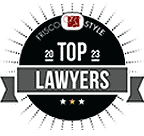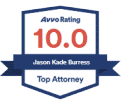11 Things An Injured Victim Should Do After A Car Wreck
More than 3.2 million people are injured in car crashes in the United States each year. Many people will get into at least one car wreck in their lifetime, but that does not make the situation any less scary.
Being involved in a car crash is an overwhelming experience that can affect you physically, emotionally and financially. Immediately after a car crash, you will likely have adrenaline coursing through your veins and be facing questions from emergency responders, the at-fault driver and others. It can be hard to remember what to do and say; the sooner you contact a personal injury attorney, the sooner you can get tailored guidance about the best steps to take in your situation.
In cases of serious injury, much of the advice below may be inapplicable. This article is intended for victims who suffer non-life-threatening injuries. In general, to give yourself the best chance of getting both the medical attention and financial compensation you need to recover, we recommend taking the following steps immediately after a crash.
1. Get to a safe place. Car wrecks can happen anywhere. You could be on a highway, crowded city street or rural road. Take in your surroundings and any additional dangers, and move out of high-traffic zones if it is safe to do so.
2. Call 911 and tell emergency personnel you are injured. The health and safety of everyone involved in the wreck should be your priority. Especially if you are injured, dial 911 and request officer assistance. An officer will arrive on scene, investigate the crash and normally prepare a crash report. The crash report will include necessary information about the parties involved, the crash scene, insurance companies and policy numbers, damage to each vehicle, liability (fault) determinations and basic injuries. Be sure and tell the responding officer and emergency personnel (EMTs) about all of your injuries, abnormal health symptoms and pain you have so the crash report will document this information. Emergency personnel will ask you questions about the crash. Be very thorough with the EMTs so they can give you the proper medical care, which may include transporting you to a local hospital.
3. Exchange information with the other driver. Once the police and ambulance have arrived, you should exchange driver's licenses and insurance cards with the other driver or drivers involved. If you don't feel comfortable approaching the other driver for their information, ask the police officer to help you.
4. Get contact information for any witnesses. If there are any witnesses to the wreck, try to obtain their contact information in case their statements or testimony is required at a later date.
5. Do not engage with the other driver. Aside from exchanging contact information and asking if they need medical attention, you should not discuss anything relating to the crash with the other driver. You both may be upset, or you may unwittingly downplay fault or injuries. The best way to avoid saying something that could hurt your case is to avoid questions about fault and your injuries.
6. Document the scene. It is a good idea to take photographs of the scene if you can. Visually capture the location of the wreck and the damage to all vehicles involved. One of the most important things you can do at the scene of the crash is take a photo of the responsible party's license plate, the damage to the vehicles and a few photos of the accident scene.
7. Document your injuries. Evidence of bodily injuries such as bruises, lacerations and swelling fade over time. If you don't record or document these injuries, your claim will lose considerable value. Take photos of any cuts, bruises, welts and other visible injuries, and photograph yourself in the hospital. Try to take photos of any such injuries each day after the crash. Written documentation of your injuries, while helpful, does not have the same impact as visual evidence.
8. Go to the emergency room. If you are hurt, the best thing for your body - and the claim - is to go to an emergency room immediately after the crash occurs. Your primary care physician probably is unlikely to agree to see you after a car crash. If you wait to get medical treatment or go to an "Urgent Care" type clinic, the insurance company will downplay your injuries.
9. Send your insurance company a copy of the crash report - but do not submit to a recorded interview. You should never give a recorded statement to any insurance company - yours or that of the other driver - about your injuries or how the crash occurred. If you do not retain a qualified personal injury law firm right away, you will have to report the crash to your own insurance company. It is sufficient to send them a copy of the crash report but you should decline to provide a recorded interview or written statement.
10. Do not talk to the at-fault driver's insurance company. If you are hurt, you should not have any conversations with the at-fault insurance company. They will use questions crafted by insurance attorneys to create ambiguity about liability/fault and well as minimizing your injuries. The in-depth questions the insurance company will ask you about time, speeds, distances, etc. can be devastating to the liability part of the claim. These recorded statements will almost certainly be used against you. Do not give insurance adjusters the opportunity to question you in the first place.
11. Contact a personal injury attorney. Finally, you should always seek experienced attorneys like Burress Injury Law as soon as possible. We are committed to protecting the interests of victims and their families, helping them obtain necessary medical attention and maximizing the value of the claims while they focus on their health and family.




















 ON
ON
